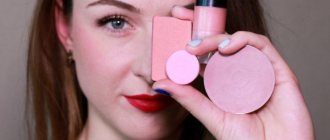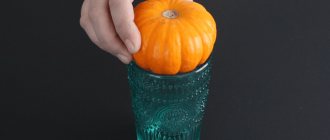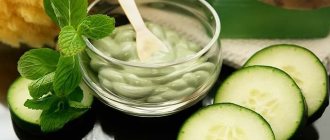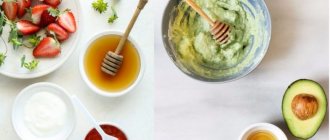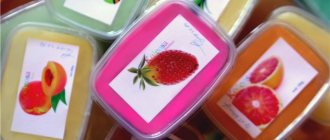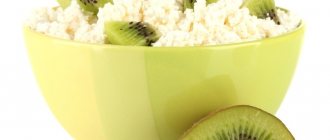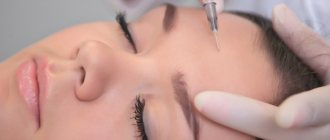The process of exfoliating keratinized particles of the epidermis from the surface of the skin using auxiliary products is called peeling. Chemical peeling occupies a special place in the classification of these procedures. It involves exposure to the surface of the face with specialized chemical compounds. As a result of this influence, the stratum corneum softens and is gently discharged along with dirt, bacteria and secretions of the sebaceous and sweat glands. Chemical facial peeling can be performed either in a salon or at home.
Superficial facial peeling is a fairly gentle procedure that does not affect the deeper layers of the skin.
Types of chemical peeling
Like other types of cleansing procedures, peeling with chemical products can have varying depths of impact. This principle allows us to distinguish three main types of cleaning: superficial, middle and deep.
- Superficial peeling exerts its effect within several layers of the epidermis, its horny part. This is the most gentle option for facial cleansing, often used even at home. The impact does not affect the usual rhythm of life. The main indication for the procedure is young problem skin. Superficial chemical peeling gives immediate results, but is not long-lasting. Cleansing courses must be repeated regularly.
- Medium peeling has a deeper effect. It affects the stratum corneum of the epidermis completely, the components reach the basement membrane. The procedure causes persistent facial redness and severe peeling. After the session, home treatment is required for at least one week. It is rarely performed at home: only by an experienced specialist for certain indications. In addition to solving skin problems, a chemical session has a lasting rejuvenating effect that lasts up to a year.
- Deep peeling causes rejection of the epidermis, even affecting the basement membrane. This kind of chemical peeling is not carried out at home, because it requires local or general anesthesia and is a deep chemical burn of the face. The rehabilitation period until the epidermis is completely restored can take about five months. The procedure is indicated for deep wrinkles, scars, scars.
If you have recently sunbathed on the beach or spent a lot of time in the sun anywhere else, chemical peeling is not yet possible.
FAQ
Cosmetologists often have to answer the following questions from patients:
- How to prepare for peeling? No special arrangements are required. Before carrying out the procedure, you only need to remove makeup from your face and use preparations to remove sebum (lotion or tonic).
- Is deep peeling done at home? During this procedure, not only epidermal tissues are exposed, but also the upper cells of the dermis. Deep cleaning is a serious intervention, and it should be carried out by a specialist in a cosmetology center. Carrying out the procedure on your own without special knowledge and skills can end in disaster.
- How to properly cleanse combination skin? Either they take products for the normal type, or the problematic T-zone is treated with a product for oily skin, and the cheeks for dry skin.
- How to care for cleansed skin? Use only soft cleansing cosmetics for a week. Moisturize your face twice a day. Do not expose your skin to ultraviolet radiation, overheating or hypothermia, and do not injure it. If excessive pigmentation occurs, immediately go to a dermatologist.
There are many recipes and store-bought preparations for peeling at home. Each woman can choose an option according to her means, taking into account the condition and type of skin. The main thing is that the procedures should be carried out carefully, using only soft, non-aggressive compounds, so as not to inadvertently injure the skin.
Rating
Indications and contraindications for the procedure
Among the main indications for chemical peeling are:
- care for problematic facial skin with acne, comedones and the consequences of violation of the integrity of the skin;
- pronounced hyperpigmentation of the epidermis;
- decreased skin tone and elasticity;
- age-related changes in the form of wrinkles, folds, sagging as a consequence of exposure to ultraviolet radiation or hormonal changes;
- small scars and the problem of ingrown hairs;
- increased fat content of the epidermis, enlarged pores, sebaceous plugs;
- unevenness and dull complexion of the skin due to thickening of the stratum corneum;
- preparation for more serious procedures in a salon or at home.
Chemical peeling of the face is not performed if:
- viral or infectious diseases in the acute stage;
- pregnancy, lactation;
- fresh tanning or recent anti-aging procedures;
- mental, somatic, oncological diseases;
- taking a number of medications;
- increased skin sensitivity;
- open wounds.
Chemical peeling is, in any case, a burn that leads to intensive renewal of one or several layers of skin
Phenol peeling
This is a type of deep chemical peeling; the procedure is aggressive, radical and dangerous. Rather, it is a surgical procedure that must be performed under anesthesia. When the skin is exposed to phenol, the entire epidermis is torn off and the papillary layer of the dermis is exposed. It is painful, it poses a risk of infection, hyperpigmentation and toxic effects of phenol on the kidneys, liver and cardiovascular system. In terms of its effect on the skin, phenol peeling can be compared to a third-degree burn.
Patients undergoing this procedure require long-term rehabilitation; skin regeneration occurs after a couple of weeks, and the entire rehabilitation period lasts up to six months. The patient must remain in the hospital under the supervision of doctors during the procedure and after.
Tags: other
Market Analytics
- Black Lives Matter movement: reaction and consequences for the beauty industry
- COVID-19 is changing the rules of the game in the cosmetics market
- Beauty of the future: cosmetic innovations 2020
Convenient search for beauty salons on our website
Beauty salons in Moscow Beauty salons in St. Petersburg Beauty salons in Ekaterinburg Beauty salons in Novosibirsk
Latest blog posts on our website
- Naturecream / MATRIXYL3000 - the best skin elasticity stimulator
- Naturecream / SPF in Natural Oils
- Naturecream / Geranium (Pelargonium) oil for skin health and beauty
- Prostye-sovety / Save on a beauty salon: procedures that can be done at home
- Naturecream / Growth Factor - brings back youth?
- Oksana-Lezina / 3 effective abdominal exercises from a fitness instructor for beginners
- Prostye-sovety / Making perfect curls at home
- Prostye-sovety / Which hair removal method to choose
- Naturecream / Wrinkles Puppets
- Naturecream / PEPHA-TIGHT - instant skin lifting
Latest forum topics on our website
- Mrs._Smith / Badly sunburned! What to do?((
- Ice / Is it necessary to combine fitness classes with a diet?
- Antonova / What can be used for hair loss?
- Radio operatorKat / Who was on a protein diet?
- Suzanna / Mesotherapy on the face
Reviews about the procedure Chemical peeling for the face
- Yana | 2014-03-23 23:44:17 I take a peeling course with a cosmetologist once a week with 12 percent fruit acids, the skin becomes much better and fresher, and also a moisturizing mask and cream. The face became smooth, the spots disappeared.
- Julia |
2014-02-09 21:23:21 I did a superficial peeling with fruit acids, but I didn’t see much results.
[Leave a review]
Leave your review of this procedure (it will appear on this page after moderation)
In this form, describe only
your personal
experience of undergoing the procedure.
In order to leave a comment regarding the content of the article, use another form - in the “comments” block at the bottom of the page.
Other articles in this section
| Homemade facial peeling Homemade facial peeling, of course, will not replace procedures with a cosmetologist, but it will help keep your skin in good condition. Let's see how you can do facial peeling at home using professional preparations and products that you can prepare at home. |
| Glycolic peeling for the face Currently, glycolic peeling is a very common cosmetic procedure. Being one of the types of superficial chemical peeling, it primarily helps to cleanse the upper layer of the skin from dead stratum corneum, while simultaneously leveling its relief by reducing the thickness of the stratum corneum, while the thickness of the living layers of the epidermis increases, and pigmentation in areas excessively stained with melanin is normalized ( freckles, age spots). |
| Laser facial peeling Laser peeling, performed on the facial skin, is one of the physical rejuvenation techniques. It is based on the use of monochrome light radiation, which is a single wavelength, which, when exposed to tissue, leads to selective photothermolysis. As a result of this reaction, over 95% of the laser radiation energy is absorbed by one target tissue and is further converted into heat. As a result, the patient experiences selective evaporation of layers of skin, which makes it possible to remove age spots, acne scars, expression lines and some other skin defects. |
| Ferul peeling for the face Ferul peeling is one of the most effective ways to eliminate wrinkles, age spots, circles under the eyes and other skin imperfections that upset many women. Just a few sessions will return your skin to its healthy appearance, youth and beauty. This procedure will effectively and quickly cope with cosmetic skin defects without changing your usual lifestyle. |
| Carbon peeling for the face Laser carbon peeling is a special cosmetic procedure during which the skin is exposed to a laser beam. There is an impact on the deep layers of the epidermis and superficial peeling of the skin at the same time. A distinctive feature of this session is the use of a special gel containing carbon dioxide particles. It helps control the depth of laser exposure and has a cleansing effect. |
| Arginine peeling for the face One of the types of chemical peelings is arginine peeling, which rejuvenates and moisturizes the skin, has a mild exfoliating effect, and prevents the appearance of the inflammatory process. The result is already visible after the first procedure. The skin becomes velvety, matte, elastic, and a healthy complexion appears. |
| Almond peeling for the face Almond peeling is a superficial chemical peeling, which is considered one of the most gentle. The use of peeling with mandelic acid is also possible in the summer, since it does not have photosensitizing effects. It is suitable for people with different skin types, including very sensitive, thin skin. |
| Phenol peeling for the face Phenol peels refer to skin exfoliation procedures performed using carbolic acid (phenol). Deep peeling affects all layers of the epidermis, right down to the papillary layer. The extreme length of the rehabilitation period, reaching 12 months in some cases, and the high risk of severe complications require a particularly careful approach. |
| Gas-liquid peeling (Jet Peel) for the face One of the progressive techniques in the field of cosmetology is gas-liquid peeling, aqua-peeling or gas-liquid facial cleansing. The procedure is carried out using Jet Peel equipment specially developed in Israel. Like other types of peeling, this procedure allows for the removal of dead cells, lifting, renewal of skin cells, and also provides a superficial massage. |
| Phytic peeling for the face Peeling with phytic acid in some salons is also called “Hollywood peeling” because it came to us from the USA. It is very popular there, since it can be used at any time of the year and does not require a long rehabilitation period, that is, you can work and appear in public immediately after the procedure. Phytin peeling has proven itself best as a peeling that combats the problems of mature skin with rosacea. |
How chemical peels work
Regardless of the composition, chemical facial peeling at home and in the salon works the same. As a result of applying the product to the surface of the epidermis, a reaction occurs and a chemical burn develops. In response to this, tissues begin to produce anti-inflammatory components, enzymes, and cells begin to actively divide. In the process of renewal of the stratum corneum, capillaries are formed, the synthesis of collagen and elastin is accelerated.
Old cells are replaced by new ones, the dermis thickens, the tissues become denser and stretched. Peeling leads to renewal of the epithelium, improvement of its appearance, disappearance of age spots, scars, stretch marks, post-acne. The face becomes fresh and smooth, its color is evened out. The work of the sebaceous glands is normalized, the acid-base balance of the skin returns to normal.
The use of any chemical peeling leads to drying of tissues; this must be taken into account when choosing recipes for preparing compositions at home.
Application of acid is the main stage of chemical peeling of the face.
Options
Doing a chemical facial peel at home is not difficult; all the necessary products for the procedure can be purchased at the pharmacy. The main thing to remember is that all new components need to be checked for allergic reactions.
Recipes you can use:
- The classic procedure is done using boric acid, ammonia, glycerin and camphor . All components are mixed in equal proportions. Hydroperite is added to the mixture, one tablet in crushed form. To give the resulting product a certain mass, soap is added to it. The resulting mixture is applied to the face. You need to keep it until it dries completely. You need to wash off the mask with warm water. The scrub gives an excellent cleansing effect.
- For oily skin, you can use salt peeling. This is a very simple and cheap option. To carry it out you only need one spoon of table salt, you can take sea salt. It is mixed into a spoonful of any face cream. The product is applied with massage movements to the skin.
- Masks with fruit acids will help effectively solve the problem of inflammatory processes . They can be purchased at the pharmacy. It is best to choose mandelic acid; it ensures rapid cell regeneration.
- a glycolic scrub at home . To prepare it you will need low-fat yogurt and sugar. All components are thoroughly mixed and applied to the face.
- One of the effective and affordable remedies for home use is calcium chloride . To carry out the procedure yourself, it is best to take chloride 5%, it has a more gentle effect. Before cleansing, your face must be cleared of makeup. Then a thin layer of chloride is applied, followed by a layer of soap. This method helps to effectively remove dead skin cells and blackheads. After cleaning is completed, a nourishing cream is applied to the face.
If deeper cleaning is required, it is recommended to use a product based on salicylic acid and calcium chloride.
Stages of the procedure
If peeling is carried out in a salon, then pre-peeling preparation and intensive rehabilitation care are required. The procedure carried out at home is a more gentle cleansing option; its chemical composition is based on low concentration acids or enzymes, so the session is simple and does not require special skills.
Pre-peeling preparation is necessary in cases of significant thickening of the stratum corneum. In order to smooth it out and increase tissue permeability, a special chemical product or diluted fruit acid is applied to the skin for 1-2 weeks.
After preparation, chemical peeling is carried out directly. In the salon, the cosmetologist selects the type of acid or a combination of several components, their concentration, exposure time, and the number of layers applied. The mass is removed with a special neutralizer. At home, a weak soda solution can act as a neutralizer.
Post-peeling care allows you to avoid the development of complications and consolidate the results of the procedure. To speed up facial epithelization, soothing masks and moisturizing creams are recommended. The recipes for such products involve the use of natural ingredients and provide high efficiency. Another important point is that a chemical burn causes increased sensitivity of the epidermis to ultraviolet radiation, so the use of sunscreen products is mandatory.
The degree of severity of the anti-aging effect depends on what acid was used for chemical peeling
Acids used for chemical exposure of the epidermis
Different acids provide different depths of action. Chemical phenol facial peeling provides the deepest impact. This type of cleansing is equated to surgery. In one procedure, at least 10 years of age are removed. Among the most popular intermediate-acting acids, experts highlight trichloroacetic and salicylic acids. You can look at photographs of such chemical peeling before and after the procedure - the difference in the condition of the skin is obvious.
Superficial chemical peeling at home and in beauty salons is most often carried out with fruit acids or calcium chloride. These components can be purchased in ready-made concentrated form or used in recipes based on natural ingredients.
In order not to expose yourself to unnecessary risks when carrying out home peeling, give preference not to pure acids, but to products containing them
How to carry out the procedure at home?
As a rule, before using abrasive chemical compounds, you should first test your skin for sensitivity and reaction to the components. To do this, you need to apply a silent product to your elbow and wait a while. Even if the test turns out to be negative, but a burning, tingling, redness or rash appears on the skin, it is better to quickly wash off the composition, wipe the area with the infusion of the herb and refuse to use one or another chemical.
Video: chemical peeling at home:
So, to carry out the procedure you need:
- wipe your face with cosmetic milk or gel;
- treat lips, nostrils, eyelids with Vaseline or baby cream to avoid possible burns if the skin is overly sensitive or dry;
- treat problem areas on the face and neck with a moisturizer;
- maintain the composition for the time specified in the instructions;
- wash off the composition;
- blot your face with a napkin;
- treat with moisturizer with pH restoration formula. You can learn about deep facial peeling at home here.
Mild tingling and discomfort are acceptable after using chemical compounds. But you cannot leave the compositions on your face for more than the time prescribed according to the instructions. Also, during the first 2 days after peeling, you should refrain from applying decorative cosmetics, and before going outside, lubricate your face with a protective cream. Avoid visiting a solarium and being in the sun for 10 days.
To achieve maximum effect, it is advisable to carry out 7-8 procedures, but not more than once every 12 days. The skin should be given a short rest and recovery period.
Chemical peeling at home
Even if you decide to carry out chemical peeling at home, it is advisable to get a recommendation from a professional who will determine your skin type, advise on the best option for cleansing your face, and develop an individual daily care program. Many women, after undergoing procedures in a hospital setting, simply try to repeat the cosmetologist’s manipulations. Usually such experiments do not lead to anything good. When preparing and conducting home peelings, there are specific features that must be taken into account.
- Any peeling – mechanical, chemical or combined – is stressful for the body. It is necessary to set aside several hours of your time in order to prepare for the procedure, carry out the manipulation itself without haste, and provide the skin with subsequent proper rest.
- At home, it is better not to use pure acids. Replace them with safer ingredients. These can be fermented milk products, vegetables, fruits, wine, berries, nuts, essential oils.
- If, nevertheless, an acid is chosen as the main ingredient, it is important to remember that it must be neutralized before rinsing with water. Even a drop of water touching a surface treated with acid causes a chemical burn.
- Some manufacturers offer special kits that allow chemical peeling of the face. You just need to apply the prepared components to the skin. Such options may be optimal for skin care at home, but you should not use medications thoughtlessly. It is necessary to ensure that the components correspond to the type of epidermis.
- Even with a low concentration of active components and the presence of a softening base, peeling is a rather aggressive procedure; you should not abuse it.
- On the other hand, regular and proper peeling is an affordable way to preserve the beauty of your face and prolong its youth.
The calcium chloride solution should be applied to the face in layers.
What to use for a chemical peel at home
Before you start choosing a peeling drug at home, you need to conduct an “internal investigation” - let's call it this way:
- highlight the problems that you want to get rid of through the procedure;
- choose the appropriate type of peeling;
- conduct pre-peel preparation and stock up on knowledge about post-peel care.
Now we smoothly move on to the types of self-peeling. All the means used can be divided into four groups:
- natural products that are available at home or can be purchased in the store. We choose those that have a peeling effect and based on them we create our own composition (recipes for the most effective ones are attached);
- professional products that are used to perform procedures in salons. They can be purchased in specialized stores. Professional peeling at home is an excellent alternative to salon care. But carefully read the composition of the product, not only the effect, but also your safety depends on it;
- pharmaceutical products that have a peeling effect. There are medications in pharmacies that can not only cleanse the epidermis, but also have a therapeutic effect on “damaged” skin;
- products from stores selling components for soap making and cosmetics.
When considering peeling with pharmaceutical products, you should pay special attention to finished products. This is the optimal, safest option, since the composition is balanced and the risk of side effects is almost zero. For example, among enzyme peelings, “Enzyme-salicylic peeling Stopproblem” is very popular. It is perfect for young skin, cleanses and prepares the epidermis before applying nourishing masks or creams.
Acid chemical peels are more complex and more aggressive. However, such compositions are capable of combating a large number of problems and can be used at any age.
There are ready-made products with these active ingredients. Very often, acids are included in professional scrubs used for home peeling. However, you can purchase a separate acid at a pharmacy or specialty store and create a product for yourself.
The most commonly used acid components are:
- salicylic;
- glycolic;
- dairy;
- retinol;
- apple;
- pro-grape;
- lemon;
- almond and others.
Home chemical peeling is an effective facial cleansing procedure that should be performed regularly. This approach will significantly save time and money. However, you need to be absolutely sure that the manipulation will not harm.
Effective recipes for home peeling
A gentle procedure for removing rough skin and rejuvenating the face can be done at home using available products sold in pharmacies. Of course, you will not get such brilliant results as after visiting a salon. But if you regularly do chemical peeling at home, you can achieve skin renewal and smooth out wrinkles. Here are proven recipes for home use.
Peeling with calcium chloride
Perhaps the easiest and safest way to improve your appearance is superficial chemical peeling. For the first procedure, it is better to take a 5% solution of calcium chloride (sold in ampoules). Using a sponge, apply a calcium chloride solution to dry, cleansed skin and wait until the mixture dries. Apply another layer of the product on top and again allow time to dry. Such manipulations are performed at home from 4 to 8 times.
Hands are “soaped” with baby cream and carefully, using your fingertips, the mixture is removed by rolling it up. Horny particles will be rejected along with the chemical base. Rinse the facial skin generously with water.
After the procedure, facial redness and dry skin may appear. A mask with oatmeal, chamomile infusion and banana pulp will help restore them. All ingredients are mixed until pureed and applied to the face. Instead of a mask at home, you can use compresses with herbal decoctions - calendula, mint or sage, which will have an anti-inflammatory and soothing effect.
Although the procedure is considered quite mild, it should be carried out at home no more than once every 10 days.
Classic peeling
In a glass, mix 30 ml of camphor alcohol and glycerin, add 10 ml of ammonia (solution concentration - 10%), 2 tablets of hydroperite and 10 g of boric acid. In another container, grate good quality baby soap on a fine grater and gradually add the prepared chemical mixture until the mass reaches a creamy consistency. It is applied to the skin of the face and allowed to dry, after which it is washed off with calcium chloride at a 10% concentration. The face is washed generously with water and dried with a paper towel.
The mixture keeps well in the refrigerator for up to 3 months.
Chemical peeling with bodyaga
Bodyaga powder is mixed with 3% hydrogen peroxide until the mass begins to bubble and becomes a paste-like consistency. A mask with bodyaga is applied to the face, but the eyebrows are first lubricated with Vaseline to prevent their discoloration. Rubber gloves are put on your hands. Keep the mask on for 20 minutes.
Chemical peeling of the face with bodyaga at home is carried out daily until the skin begins to peel off. Usually, for normal and dry skin, you will need to make 2-3 masks, and oily skin will have to be treated for 4-5 days.
A mask with bodyaga has a rejuvenating effect.
Effective recipes - how to make your own peeling product
There are many ways to perform peeling at home. The main thing is to prepare your face:
- cleanse the stratum corneum;
- even out the skin;
- remove excess thickening by treating the face with fruit acid diluted with water;
- carefully study all the components in the composition used and the required time for exposure.
You can carry out superficial salicylic treatment at home as follows:
- dissolve 1 Aspirin tablet in water;
- add aloe juice and honey (a few drops);
- mix with salicylic acid diluted with water;
- treat the upper layer of the epidermis with the mixture;
- After the exposure time has expired, rinse off the composition and wipe your face with a napkin.
Price – about 30 rubles
For another recipe, prepare this mixture:
- mix natural yogurt with lemon (juice), cane sugar in equal quantities;
- apply the mixture to cleansed skin;
- leave for 10 minutes, rinse with cool water.
Another recipe:
- mix camphor and ammonia, glycerin, boric acid and hydrogen peroxide (3%) in equal quantities;
- add baby soap (grate a small piece);
- stir until a white creamy mass is obtained;
- transfer the mixture into a jar and put it in the refrigerator;
- lubricate your face 2 times a day, leaving until completely dry;
- wipe your face with a solution of potassium chloride (10%);
- wash, pat your face with a towel;
- lubricate with protective cream;
- carry out the procedure no more than 3 times a year. You can read about lemon peeling at the link.
If you carry out facial peeling at home regularly and taking into account all the rules, then radiance, youth and smoothness of the skin are guaranteed.
How to do deep peeling
Unlike medium and superficial peeling, deep cleansing of subcutaneous tissues allows you to solve the most complex problems on the face and cleanse skin pores of dirt, blockages, and blackheads. Personalized deep cleaning promotes:
- improving blood circulation;
- stabilization of the activity of the sebaceous glands;
- relieving tissues from drying out and pigmentation;
- elimination of dead cells and stratum corneum;
- renewal, rejuvenation, silkiness of the skin;
- imparting elasticity to tissues;
- smoothing out any unevenness, scars and wrinkles on the face.
Of course, to achieve the highest deep effect, it is better not to do it at home, but to resort to the services of a professional in a salon. Only a specialist will be able to approach the matter competently, give the necessary recipes, tips and recommendations for facial care in the future. Deep peeling implies a longer-lasting effect, affecting not only the superficial keratinized layer of the epidermis, but also the inner layers of the reticular dermis. The advantages of deep cleaning are a sustainable effect, eliminating pigmentation for a long period.
Video of deep facial peeling at home:
Deep peeling is not performed if:
- excessively thin, painful and hypersensitive skin;
- the presence of wounds, pustules, open scratches or damage;
- the presence of infectious diseases on the skin.
Applying a chemical peel to problematic skin can lead to irritation and inflammation in the areas. There are a number of limitations when performing deep facial cleansing. Cannot be used by women during breastfeeding. It is better to follow this rule: wait for time and carry out the procedure later, but in the meantime, if necessary, choose to use a more gentle method.

